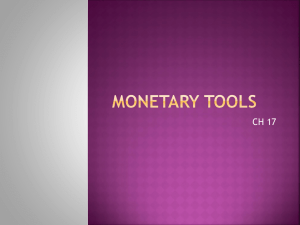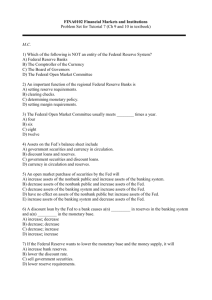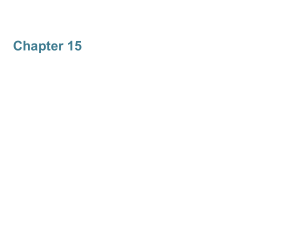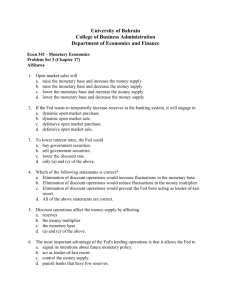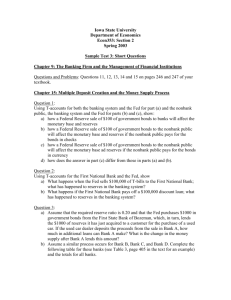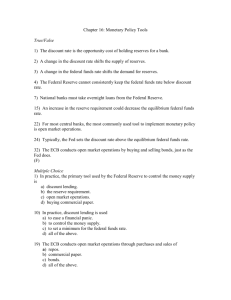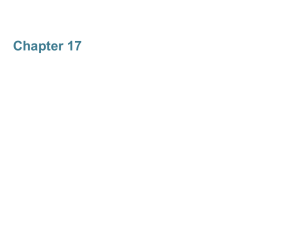Lecture 26
advertisement
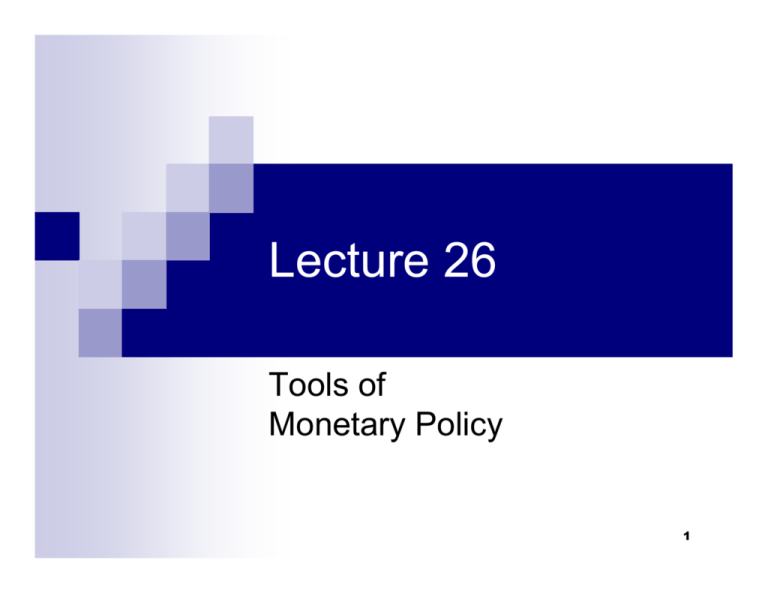
Lecture 26 Tools of Monetary Policy 1 Tools of Monetary Policy Open market operations Changes in borrowed reserves Affect the monetary base Changes in reserve requirements Affect the quantity of reserves and the monetary base Affect the money multiplier Federal funds rate—the interest rate on overnight loans of reserves from one bank to another Primary indicator of the stance of monetary policy 2 Demand in the Market for Reserves What happens to the quantity of reserves demanded, holding everything else constant, as the federal funds rate changes? Two components: required reserves and excess reserves Excess reserves are insurance against deposit outflows The cost of holding these is the interest rate that could have been earned As the federal funds rate decreases, the opportunity cost of holding excess reserves falls and the quantity of reserves demanded rises Downward sloping demand curve 3 Supply in the Market for Reserves Two components: non-borrowed and borrowed reserves Cost of borrowing from the Fed is the discount rate Borrowing from the Fed is a substitute for borrowing from other banks If iff < id, then banks will not borrow from the Fed and borrowed reserves are zero The supply curve will be vertical As iff rises above id, banks will borrow more and more at id, and re-lend at iff The supply curve is horizontal (perfectly elastic) at id 4 5 Affecting the Federal Funds Rate An open market purchase causes the federal funds rate to fall; an open market sale causes the federal funds rate to riseÄ shifting the supply curve If the intersection of supply and demand occurs on the vertical section of the supply curve, a change in the discount rate will have no effect on the federal funds rate 6 Affecting the Federal Funds Rate (cont’d) If the intersection of supply and demand occurs on the horizontal section of the supply curve, a change in the discount rate shifts that portion of the supply curve and the federal funds rate may either rise or fall depending on the change in the discount rate When the Fed raises reserve requirement, the federal funds rate rises and when the Fed decreases reserve requirement, the federal funds rate fallsÄ shifting the demand curve 7 8 9 10 Open Market Operations Dynamic open market operations Defensive open market operations Primary dealers TRAPS (Trading Room Automated Processing System) Repurchase agreements Matched sale-purchase agreements 11 Advantages of Open Market Operations The Fed has complete control over the volume Flexible and precise Easily reversed Quickly implemented 12 Discount Policy Discount window Primary credit—standing lending facility Secondary credit Seasonal credit Lender of last resort to prevent financial panics Creates moral hazard problem 13 14 Advantages and Disadvantages of Discount Policy Used to perform role of lender of last resort Cannot be controlled by the Fed; the decision maker is the bank Discount facility is used as a backup facility to prevent the federal funds rate from rising too far above the target 15 Reserve Requirements Depository Institutions Deregulation and Monetary Control Act of 1980 sets the reserve requirement the same for all depository institutions The Fed can vary the 10% requirement between 8% to 14% 16 Disadvantages of Reserve Requirements No longer binding for most banks Can cause liquidity problems Increases uncertainty Recommendations to eliminate 17



